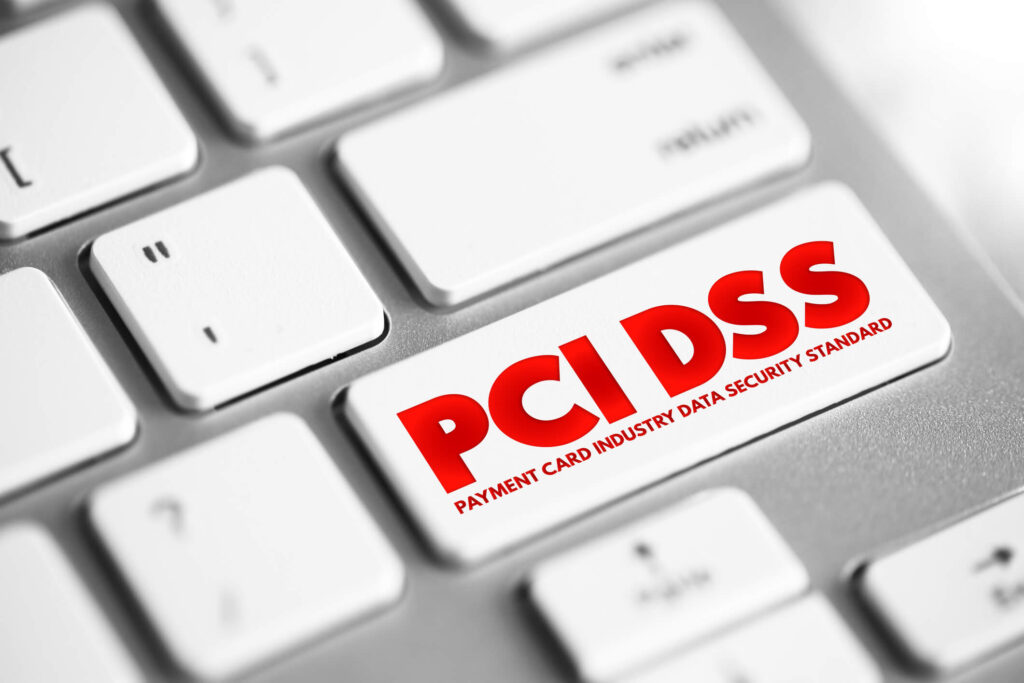
By American April 25, 2024
In today’s digital age, securely storing customer payment information is of utmost importance for businesses. With the increasing prevalence of cyber threats and data breaches, it is crucial for organizations to implement robust security measures to protect sensitive customer data. This comprehensive guide will provide you with a detailed overview of how to securely store customer payment information, covering various aspects such as compliance with industry standards, encryption techniques, best practices, choosing reliable payment gateway providers, securing payment information in different platforms, and handling data breaches.
Understanding the Importance of Securely Storing Customer Payment Information
The importance of securely storing customer payment information cannot be overstated. Not only does it protect your customers’ sensitive data, but it also safeguards your business reputation and helps you comply with legal and industry regulations. A data breach can have severe consequences, including financial losses, legal liabilities, and damage to your brand image. By implementing robust security measures, you can mitigate these risks and build trust with your customers.
Compliance with Payment Card Industry Data Security Standard (PCI DSS)
One of the key frameworks for securely storing customer payment information is the Payment Card Industry Data Security Standard (PCI DSS). PCI DSS is a set of security standards established by major credit card companies to ensure the protection of cardholder data. Compliance with PCI DSS is mandatory for any organization that processes, stores, or transmits payment card information. It provides a comprehensive framework for implementing security controls, including network security, access controls, and encryption.
Implementing Encryption Techniques for Secure Payment Information Storage
Encryption is a critical component of securely storing customer payment information. It involves converting sensitive data into an unreadable format, which can only be decrypted with a specific key. There are various encryption techniques available, such as symmetric encryption, asymmetric encryption, and hashing. It is recommended to use a combination of these techniques to enhance the security of payment information. Additionally, using strong encryption algorithms and regularly updating encryption keys are essential practices to ensure the effectiveness of encryption.
Best Practices for Securely Storing Customer Payment Information
Implementing best practices is crucial for securely storing customer payment information. Some key practices include:
- Limiting data retention: Only store the minimum amount of payment information required for business purposes. Avoid storing sensitive data such as full credit card numbers or CVV codes.
- Implementing access controls: Restrict access to payment information to authorized personnel only. Use strong passwords, multi-factor authentication, and role-based access controls to ensure that only authorized individuals can access the data.
- Regularly updating software and systems: Keep your software and systems up to date with the latest security patches and updates. Outdated software can be vulnerable to security breaches.
- Conducting regular security audits: Regularly assess your security measures to identify any vulnerabilities or weaknesses. This can include penetration testing, vulnerability scanning, and security audits.
- Monitoring for suspicious activities: Implement real-time monitoring systems to detect any unauthorized access or suspicious activities. This can help you identify and respond to potential security breaches promptly.
Choosing a Reliable Payment Gateway Provider
When it comes to securely storing customer payment information, choosing a reliable payment gateway provider is crucial. A payment gateway is a service that facilitates the secure transfer of payment information between your website or application and the payment processor. When selecting a payment gateway provider, consider factors such as their security measures, compliance with industry standards, reputation, and customer support. Look for providers that offer robust encryption, tokenization, and fraud detection capabilities.
Securely Storing Payment Information in E-commerce Platforms
E-commerce platforms are particularly vulnerable to security breaches due to the large volume of payment information they handle. To securely store payment information in e-commerce platforms, consider the following measures:
- Use secure protocols: Implement secure communication protocols such as HTTPS to encrypt data transmission between the customer’s browser and your website.
- Tokenization: Tokenization is a process that replaces sensitive payment information with a unique identifier called a token. This ensures that the actual payment data is not stored in your system, reducing the risk of data breaches.
- Secure hosting: Choose a secure hosting provider that offers robust security measures, such as firewalls, intrusion detection systems, and regular backups.
- Regular security updates: Keep your e-commerce platform up to date with the latest security patches and updates. This includes both the platform itself and any plugins or extensions you use.
Protecting Customer Payment Information in Brick-and-Mortar Stores
While the focus is often on securing payment information in online platforms, brick-and-mortar stores also need to implement security measures to protect customer payment information. Some key practices include:
- Point-of-sale (POS) security: Ensure that your POS systems are secure and up to date. Use strong passwords, enable encryption, and regularly update the software.
- Secure networks: Implement secure Wi-Fi networks for your store and separate them from your business network. Use firewalls and encryption to protect the network from unauthorized access.
- Physical security: Protect physical payment terminals and card readers from tampering or skimming devices. Regularly inspect and maintain these devices to ensure their integrity.
- Employee training: Train your employees on secure payment handling practices, such as not storing payment information on paper or electronic devices and being vigilant for suspicious activities.
Securing Payment Information in Mobile Applications
With the increasing popularity of mobile applications for payments, securing payment information in mobile apps is crucial. Some key measures include:
- Secure coding practices: Follow secure coding practices to minimize vulnerabilities in your mobile app. This includes input validation, secure storage of sensitive data, and secure communication protocols.
- Secure authentication: Implement strong authentication mechanisms, such as biometrics or two-factor authentication, to ensure that only authorized users can access payment information.
- Secure data transmission: Encrypt data transmission between the mobile app and your servers using secure communication protocols such as HTTPS.
- Regular security updates: Keep your mobile app up to date with the latest security patches and updates. Promptly address any reported vulnerabilities or security issues.
Regularly Monitoring and Updating Security Measures
Securing customer payment information is an ongoing process that requires regular monitoring and updating of security measures. Cyber threats and attack techniques are constantly evolving, so it is essential to stay vigilant and adapt your security measures accordingly. Regularly monitor your systems for any suspicious activities, conduct security audits, and stay informed about the latest security trends and best practices.
Training Employees on Secure Payment Information Handling
Employees play a crucial role in securely storing customer payment information. It is essential to train your employees on secure payment information handling practices. This includes educating them about the importance of data security, teaching them how to identify and respond to potential security threats, and providing clear guidelines on how to handle payment information securely. Regular training sessions and reminders can help reinforce these practices and ensure that your employees are well-equipped to protect customer data.
The Role of Tokenization in Secure Payment Information Storage
Tokenization is a powerful technique for securely storing customer payment information. It involves replacing sensitive payment data, such as credit card numbers, with a unique identifier called a token. The token is meaningless to anyone who does not have the corresponding decryption key. By tokenizing payment information, businesses can reduce the risk of data breaches, as the actual payment data is not stored in their systems. Even if a breach occurs, the stolen tokens are useless without the decryption key.
Two-Factor Authentication: Adding an Extra Layer of Security
Two-factor authentication (2FA) is an additional layer of security that can significantly enhance the protection of customer payment information. 2FA requires users to provide two forms of identification to access their accounts or make payments. This typically involves something the user knows (such as a password) and something the user has (such as a mobile device or a fingerprint). By implementing 2FA, businesses can ensure that even if a password is compromised, an additional authentication factor is required to access payment information.
The Importance of Regularly Auditing and Testing Security Measures
Regularly auditing and testing security measures is crucial to ensure the effectiveness of your security controls. Security audits involve assessing your systems, processes, and controls to identify any vulnerabilities or weaknesses. This can include penetration testing, vulnerability scanning, and reviewing access controls. By conducting regular audits, you can proactively identify and address any security gaps before they are exploited by attackers. Additionally, regular testing of security measures helps ensure that they are functioning as intended and provides an opportunity to fine-tune your security controls.
The Risks of Storing Payment Information Locally vs. Using a Third-Party Provider
When it comes to storing payment information, businesses have the option to store it locally or use a third-party provider. Storing payment information locally gives businesses more control over their data but also increases their responsibility for security. It requires implementing robust security measures and complying with industry standards. On the other hand, using a third-party provider can offload some of the security responsibilities but also introduces a level of dependency on the provider’s security measures. It is essential to carefully evaluate the risks and benefits of each approach based on your business requirements and capabilities.
How to Handle Data Breaches and Communicate with Affected Customers
Despite implementing robust security measures, data breaches can still occur. In the event of a data breach where customer payment information is compromised, it is crucial to have a well-defined incident response plan in place. This plan should include steps to contain the breach, investigate the incident, notify affected customers, and provide support and assistance to mitigate any potential harm. Prompt and transparent communication with affected customers is essential to maintain trust and minimize the impact of the breach.
The Future of Secure Payment Information Storage: Emerging Technologies
The future of secure payment information storage is constantly evolving with the emergence of new technologies. Some emerging technologies that hold promise for enhancing the security of payment information storage include:
- Biometric authentication: Biometric authentication, such as fingerprint or facial recognition, offers a more secure and convenient way to authenticate users and protect payment information.
- Blockchain technology: Blockchain technology has the potential to revolutionize payment information storage by providing a decentralized and tamper-proof ledger. It can enhance security, transparency, and trust in payment transactions.
- Artificial intelligence (AI) and machine learning: AI and machine learning can be used to detect and prevent fraudulent activities by analyzing patterns and anomalies in payment data.
- Quantum-resistant encryption: As quantum computing advances, there is a need for encryption algorithms that are resistant to quantum attacks. Quantum-resistant encryption algorithms are being developed to address this challenge.
FAQs
Q.1: What is the Payment Card Industry Data Security Standard (PCI DSS), and why is it important?
Answer: The Payment Card Industry Data Security Standard (PCI DSS) is a set of security standards established by major credit card companies to ensure the protection of cardholder data. Compliance with PCI DSS is important because it helps businesses protect customer payment information, comply with legal and industry regulations, and build trust with customers.
Q.2: What encryption techniques should I use to securely store customer payment information?
Answer: To securely store customer payment information, it is recommended to use a combination of encryption techniques such as symmetric encryption, asymmetric encryption, and hashing. Additionally, using strong encryption algorithms and regularly updating encryption keys are essential practices to ensure the effectiveness of encryption.
Q.3: How can I choose a reliable payment gateway provider?
Answer: When choosing a payment gateway provider, consider factors such as their security measures, compliance with industry standards, reputation, and customer support. Look for providers that offer robust encryption, tokenization, and fraud detection capabilities.
Q.4: What security measures should I implement in my e-commerce platform to protect payment information?
Answer: Some key security measures to implement in your e-commerce platform include using secure protocols, implementing tokenization, choosing a secure hosting provider, and regularly updating software and systems.
Q.5: Are there any specific regulations for securely storing payment information in brick-and-mortar stores?
Answer: While there are no specific regulations for securely storing payment information in brick-and-mortar stores, it is important to implement security measures such as point-of-sale (POS) security, secure networks, physical security, and employee training.
Q.6: How can I ensure the security of payment information in mobile applications?
Answer: To ensure the security of payment information in mobile applications, follow secure coding practices, implement secure authentication mechanisms, use secure data transmission protocols, and regularly update your mobile app with the latest security patches and updates.
Q.7: What steps should I take if a data breach occurs and customer payment information is compromised?
Answer: In the event of a data breach, it is important to have an incident response plan in place. This plan should include steps to contain the breach, investigate the incident, notify affected customers, and provide support and assistance to mitigate any potential harm. Prompt and transparent communication with affected customers is essential.
Conclusion
Securing customer payment information is a critical responsibility for businesses in today’s digital landscape. By understanding the importance of secure payment information storage, complying with industry standards such as PCI DSS, implementing encryption techniques, following best practices, choosing reliable payment gateway providers, and securing payment information in various platforms, businesses can protect sensitive customer data and build trust with their customers.


